By Madronna Holden
“If you kill off the prairie dogs, there will be no one to cry for rain.”
Traditional Navajo warming
One former prairie dog town stretched 25,000 square miles with its burrows sheltering 400 million animals. When 20th century industry encountered such prodigious lives, it exterminated 98 per cent of them. However, the rains disappeared along with the prairie dogs, as both Navajo and Hopi individuals observed, looking out over the startling barrenness of lands from which prairie dogs were gone. Permaculture creator Bill Mollison proposed this explanation: prairie dog tunnels join those of other earth borers to create “alveoli on the lungs” of the soil that discharge moisture when underground aquifers expand and contract with twice daily earth tides. Thus prairie dog burrows helped conduct water into the air from underground water sources, instigating cycles of rain.
If we view our actions according to the results they solicit, we might well say that the prairie dogs cry for rain. Perhaps we might also see the extermination of the prairie dogs as crying for drought in the results that action solicited—though the exterminators apparently did not think in terms of the relationships perceived by the Hopi and the Navajo. The latter cultures featured sophisticated use of metaphor to expose and elaborate the connections between one thing and another. Notably, like the prairie dog burrows, Navajo and Hopi also built their homes on a sense of interconnection. Traditional Navajo hogans reflect the relational dimensions of the cosmos. Hopi kivas embrace their dwellers in the umbilical relationship with Mother Earth from which all humans emerge.
Industrialized western society has a very different conception of its houses—expressed in the story of the Three Little Pigs who build houses of straw, sticks, and brick respectively. The moral of this story emerges when the wolf (depicting nature as predator), blows down all the houses but that with the most solid walls—the one made of brick. The worldview exhibited in this tale impels humans to build walls between themselves and the natural world. Indeed, those who hold this worldview not only build stout walls, but fences and borders and dams—and develop pesticides and antibiotics– as they also separate individual humans, individual backyards—and individual nations– from one another. In the division between insider and outsider in this scheme, the outsider is readily devalued—and if inconvenient, can be moved out of the way without a second thought, as was the case of the prairie dogs. Those with this worldview, as indigenous Chehalis elder Henry Cultee from Washington State put it, would rather “chew through a mountain than go around.”
However, walls do not make their builders as secure in safety or privilege as those same builders might think. In fact, a society’s emphasis on building walls has characteristically coincided with its imminent demise, as observed in a recent National Geographic article discussing the walls the Roman Empire built in Britain and Germany. These walls not only stood at the geographical terminus of the empire, but at its historical terminus as disintegration of the Empire took hold within and without.
All told, those who would split the world into insiders and outsiders face an impossible task — since the world is inevitably interdependent. Pesticides placed on lawns enter water tables and from there the amniotic fluid of pregnant women throughout the US. Thusly underscoring the interdependence of the natural world, poisons used against outside creatures enter the most intimate of chambers in the human body. In fact, walls cannot keep us safe– they only blind us to what is on the other side of them, delaying our knowledge of and responsibility for the effects of our actions beyond those walls. If a single hungry wolf cannot blow down a brick house, there are stronger winds in climate change-instigated tornados. It is a deadly irony that self-enclosed climate-controlled cars emit carbon dioxide eroding the stability of the earth’s own climate.
The wall-obsessed ancient Romans are hardly unique in human history. The impulse to control things by segregating them is one of those “instincts of self-destruction”, as Nigerian Nobel Laureate Chinua Achebe put it, that successful human societies must find ways to discourage. In a pointed warning tale from ancient India, the protagonist destroys inconvenient nature spirits by drinking up the water in which these spirits live–which also happens to be all the water in the world, since the waters of life are interconnected. He thus instigates a drought that dries up all of life.
Early fur traders in the Pacific Northwest might have used such a warning story as they instigated their own planned drought. They set out to trap the beaver to extinction, thereby establishing a “fur desert” to discourage other trappers from moving into the area and creating economic competition. What resulted was an ecological desert where river courses narrowed and river estuaries dried up with the removal of the beaver from these habitats. Today conservation agencies are making attempts to re-introduce beavers in Eastern Oregon to help restore these lands, but a proactive understanding of interdependence would have saved both humans and beaver considerable woe.
Like the actions of prairie dogs, the actions of the indigenous people in the Pacific Northwest facilitated natural connections. Indigenous actions supported extensive biodiversity. The Willamette Valley was so flush with life that fur traders went there to stock up when their supplies ran low, terming it the “Gourmand’s Paradise” for the ease of their obtaining food there.
Attunement to the larger world is the enduring basis of human security. Such attunement is, after all, how living systems operate– as the lives within them attune themselves to one another over time. There is no more profound security than assuming essential belonging in such a well-tuned system– as the stability of indigenous Northwestern societies attests. By contrast, the strategy of wall building is a lonely as well as an ineffectual one in its attempt to set humans apart from (and above) other lives. If we wish to establish ourselves in long term security, the lessons of history would have us relinquish the impulse to divide and control the natural world, just as they would discourage choices serving simple convenience and individual rewards for some over others.
Instead, such lessons would have us create stories in which those with whom we share the living world act as our teachers–as might the prairie dogs model the way to build a true home on this earth:
Perhaps you have felt the prairie dogs digging under us, opening the beating heart of the earth, shaping their burrows into the living cells of earth’s bloodstream that urge the rains to come.
Suppose our homes did the same. Suppose what we built to shelter ourselves quenched the thirst of the grass, swelled water into the vine. Suppose we too acted as the pulsing cells moving with the tide of the earth, praying for rain that stirs all things to life with our thoughts and our actions.
Suppose the beauty we made in our skin no matter what our age or shape or color was refuge for the swan and the hummingbird. Beauty enough so his ivory no longer condemned the elephant.
Suppose our houses grew as green and leafy as trees, and memory traveled in our bodies with the echoes of a thousand other ways of being, tuning them to the hot and the cold that belongs to the land along with life-giving water.
Suppose we sheltered the earth as it has sheltered us, sharing that climate-blanket that kept our ancestors safe for 100,000 years as they became human.
Suppose we sheltered ourselves following the lessons of sweet beauty as we look out upon a living landscape calling to us as the flower calls to the bee, asking for pollination.
Following the model of nature’s honey, we can build refuges of hope and inspiration and motivation–and healing.
Where nature can lead, we can follow. Where nature has need, we can act out of our belonging to the land; praying for rain with the work of our hands.
We can regale other lives with our stories, gathering all the thirsty lives to the river we have set free.
——-
This post, along with other materials on this site, is copyright Madronna Holden. Feel free to link to this essay, but it cannot be reproduced in any form in whole or in part without permission.
Filed under: Animals, Contrasting worldviews | Tagged: adaptation, environmental philosophy, Indigenous environmental knowledge, Prairie dogs, shelter, sustainability |






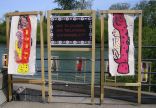



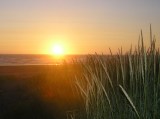
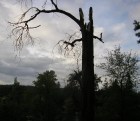
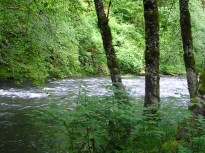



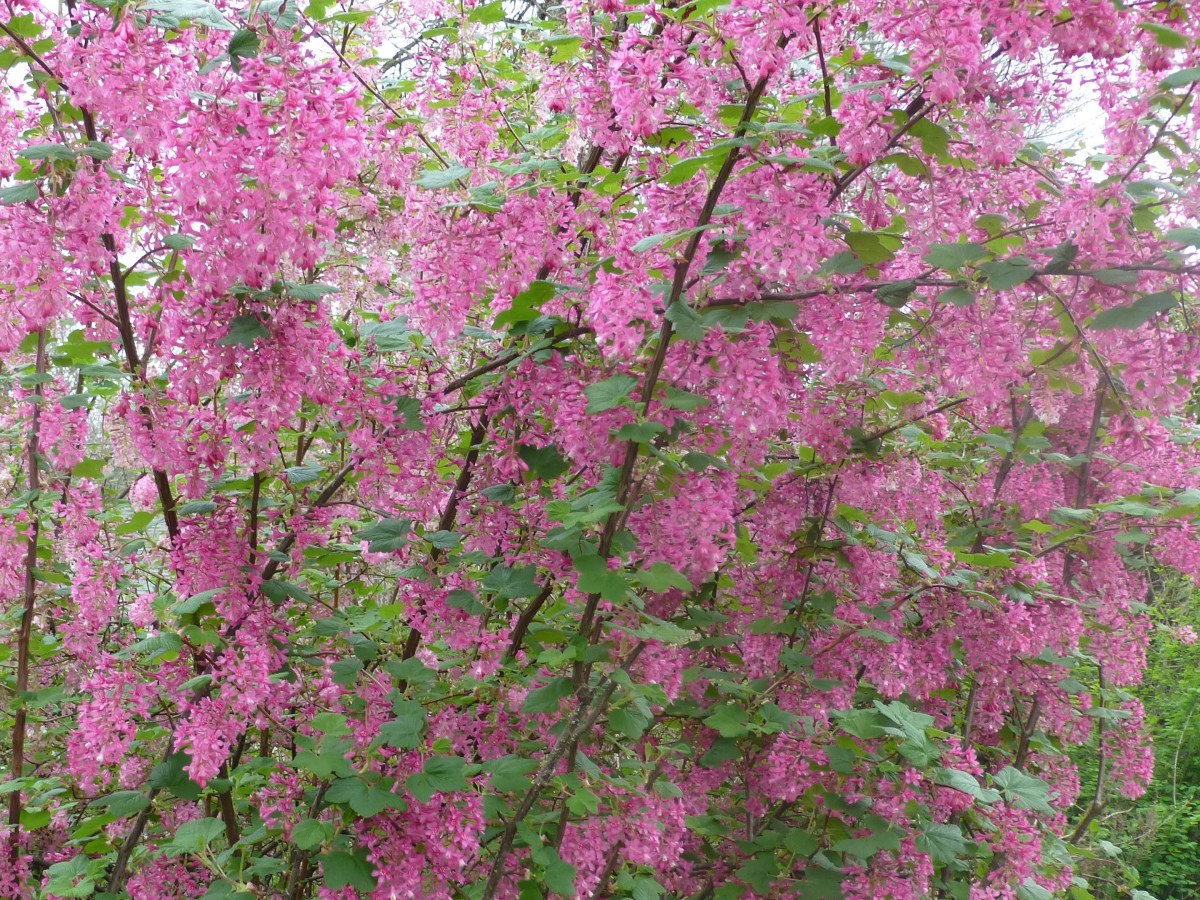
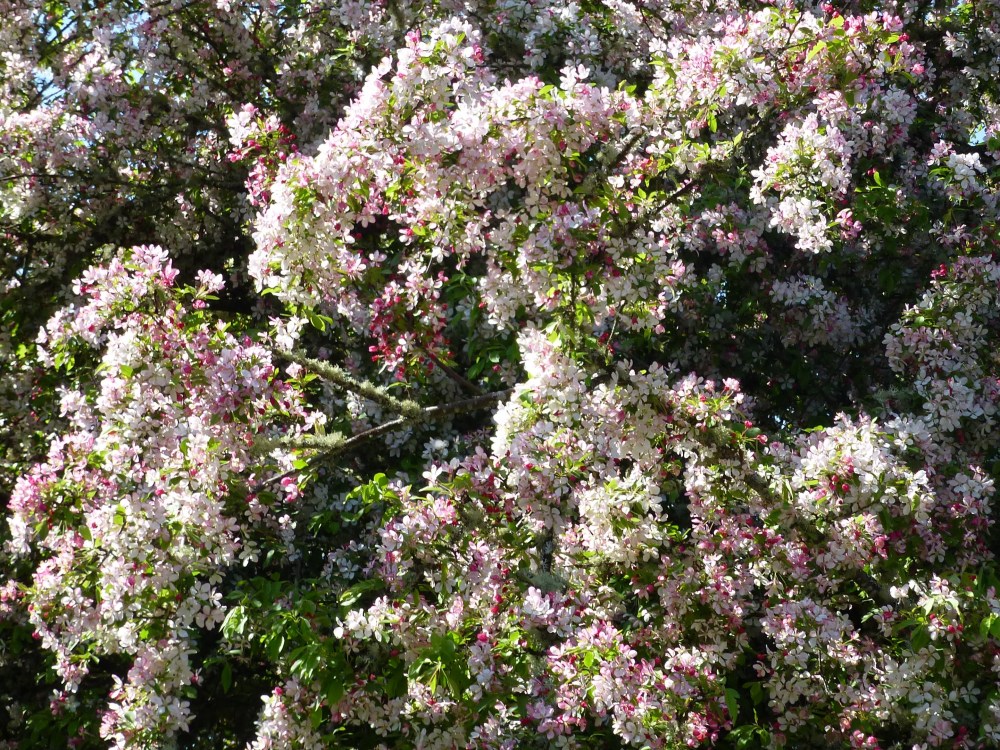
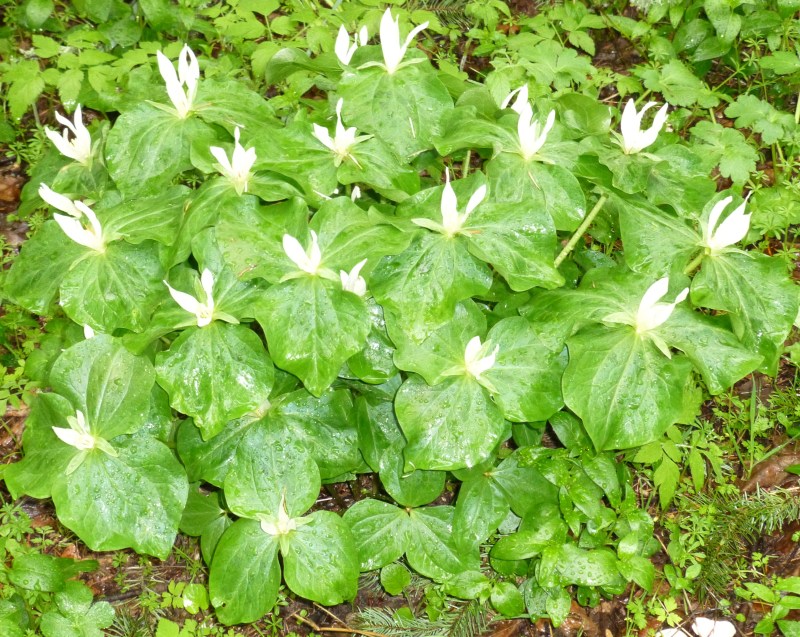
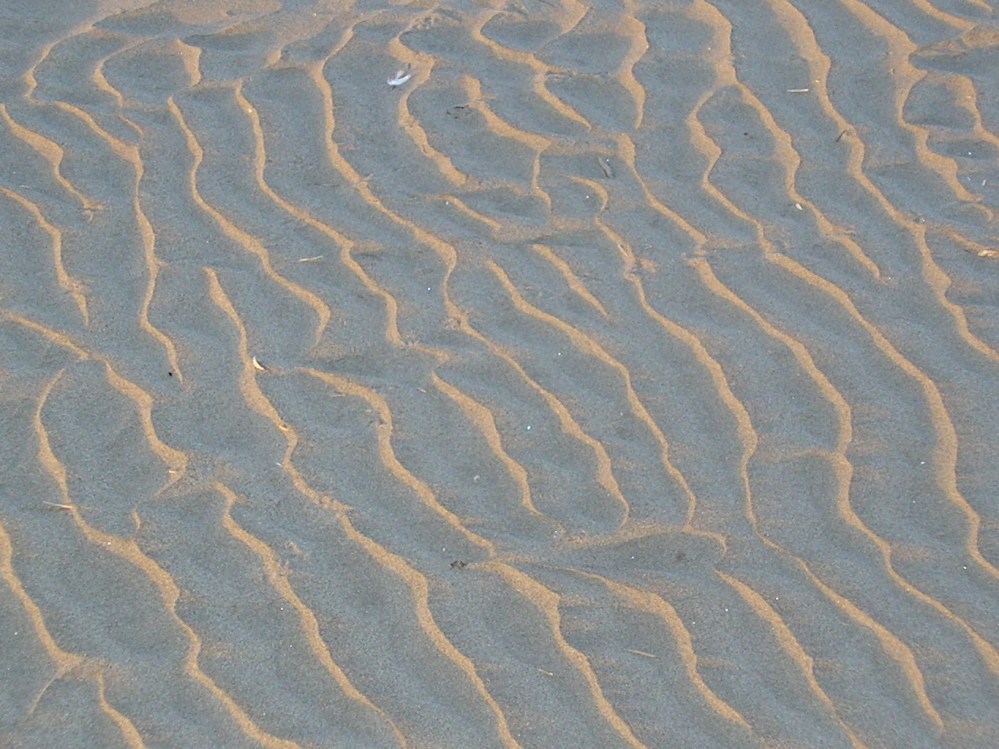
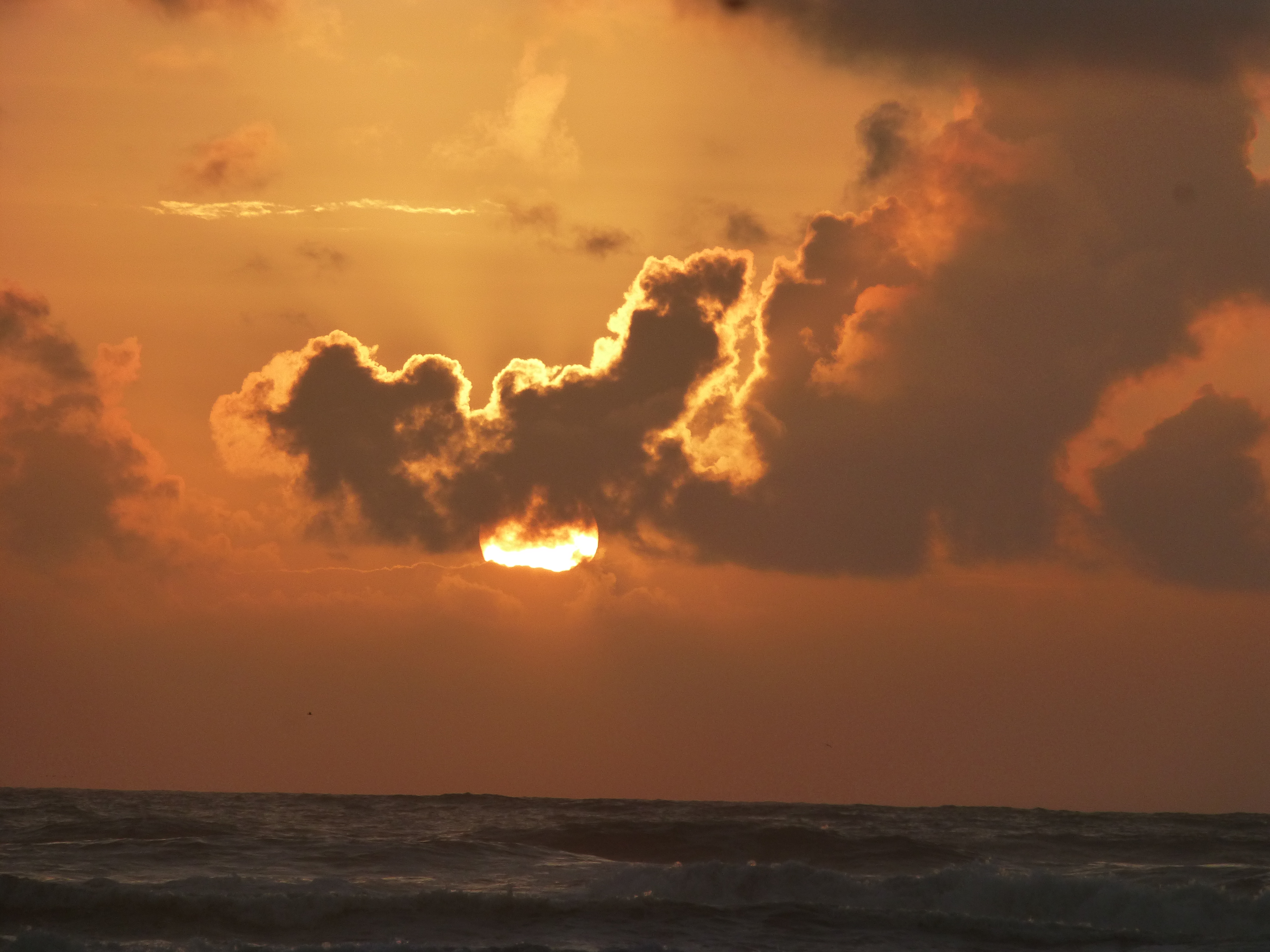
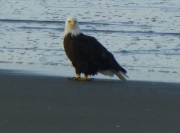

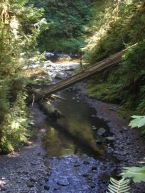





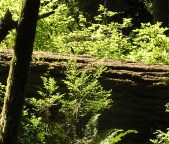




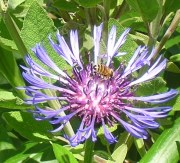



What a wonderful “story” at the end! I didn’t see a reference to anyone, so I’m assuming you wrote it. Beautiful! It makes me think of green houses and “earth homes,” of which I’m really attracted. In a discussion with my mom a few years ago, I showed her a photo of an earth home (one in the earth, not a concrete one) and told her how much I liked it. Her response surprised me…she said, “I really don’t understand you sometimes.” I guess her sending us outside when we were all small truly was for her own peace & quiet in the house!
This article lays out the truths of wall-building — that walls are built to keep all others out, humans, creatures, and nature itself. Admittedly, I am guilty of these offenses. I recently rented a small guest house close to work so that I would not have to endure the 405 freeway re-construction (disaster-from-the-get-go, in my view; and how dare they carve out the mountainside!!!!) on a daily basis. My little place is enclosed by a solid 6-foot wall and a locked gate. I have been here for six months and have met the family next door once but do not talk with them. I know no one in the neighborhood nor do I communicate with the land-owners unless there’s a problem. Walls. I am isolated by these walls. I am a part of the problem as well as a victim of the walls.
I know Prairie Dogs well. The campus of which I work is designated as an agricultural school and houses 426 acres. We have Prairie Dogs underground and underfoot, literally. I personally don’t mind them…I think they have wonderful character. What I do mind are the phone calls from neighbors complaining about the damage these creatures are supposedly doing to their personal property – as if these creatures belong to the College, therefore, we need to keep better control of them! We do not “exterminate” them, thankfully!! After reading this article, I will keep better track of what the campus Prairie
Dogs are doing to learn more of their habits and what positive effects they are having on the environment…neighbors be-damned.
And perhaps the college neighbors might even learn something about the useful place of these creatures in the environment?
I can certainly understand your wanting to get away from the freeway building! We obviously need to change much in our culture in order to allow peace of mind beyond walls.
Thanks for your thoughtful as well as kind response.
As for your mother’s response to the earth house– new things sometimes take getting used to. I can only imagine that the generations to follow us will ask why we did not build more such structures.
I did more research on Prairie Dogs and was amazed at how important these little creatures are to so many other species. According to the Prairie Dog Coalition: “The black-tailed prairie dog is a “keystone” species in the short- and mixed-grass prairie ecosystems, which has been documented extensively by biologists. At least nine species of wildlife depend on prairie dogs, another 20 opportunistically use prairie dog colonies, and an additional 117 wildlife species likely benefit from prairie dog colonies to meet their biological needs.” http://www.prairiedogcoalition.org/facts-about-pd.php
Maybe I should send this link to the college neighbors!
Thanks for adding this information– great follow up! It wouldn’t hurt to pass on the info to those who feel the prairie dogs are only a bother.
We often become self-destructive when we don’t look closely at the results of our actions.
Hi Cheryl! What a good post! Thank you for sharing your “earth home” story. I had never heard of earth homes so I just googled them! Wow, how extraordinary! I did an image search first and when the first picture came up I immediately said to myself, “That looks like what I envisioned Bilbo Baggins living in in the book The Hobbit.” They are so magical looking! (As you said, not the concrete ones.) I can see why you like them, I fell in love with them immediately! I found a website that shows you how to build one for under $5,000. If you are interested 🙂
http://conceptrends.com/2009/04/02/how-to-build-a-cheap-earth-house/
I also learned about “earth sheltering” which I guess is the same type of thing. Most of the examples I saw where of homes in Iceland. I think they are very cool! Thanks for introducing these amazing homes to me!
I understand why you moved to get away from the construction. I agree that walls can blind us from “what is on the other side of them.” I am not sure how we can get away from walls? Or is the meaning more figurative? I know we need to break the barriers that have been set up to keep us away from nature, I am just not sure how to do that yet?
Hi Maddy, thanks for following up on the idea of earth homes and sharing this link with us!
Getting away from fences is being done by some neighbors in various cities who have taken down their fences and are sharing backyards for gardening, etc. A few folks here in Eugene are growing food on their front lawns and parking strips that bear signs saying anyone can harvest them.
Perhaps there is just something about gardens that makes us generous?
I think we think in “walls”— between ourselves and “others”– so this can be taken figuratively. But it can also be taken literally. I have seen pictures of European apartments (cannot remember the country) which turn their walls into places on which to grow green things– similar to the idea of the green roof.
Partly walls can be made permeable by what we invite inside and how we understand that the effects of our actions do not stop there. Large dams are something else that we are often rethinking in terms of their total effects.
This post reminded me of an episode from the “Rosemary and Thyme” English mystery series. Instead of individual backyards, householders had one common area. It looked like a wonderful park! Just imagine the ecological ramifications–20 or so individual lawn mowers were not needed. Think of the emotional consequences–it was like living next to a park. I highly recommend this series if you like mysteries, and/or looking at beautiful gardens.
A great example– I don’t watch TV– no time, but it sounds like a lovely example of a dynamic between neighbors that more of us might re-institute.
Maddy – thanks so much for the link! Yes, you’re right, the pictures do look like something Bilbo Baggins would live in. 🙂
I love the idea of front-yard gardening and found this article from July 2011 on Time Moneyland about a woman in Michigan who was facing jail time for planting a vegetable garden in her front yard. I love that she decided to do something useful with her front yard and involves the neighborhood kids to help care for it. That’s a treasure the kids will always remember!
http://moneyland.time.com/2011/07/08/woman-faces-jail-time-for-planting-organic-vegetable-garden/
And yet this woman is charged with “illegal” activity for planting a garden? Someday I hope we will be a bit smarter!
Hi Cheryl,
I think that your idea of providing knowledge to the neighbors in your community about the benefits of prairie dogs is a great idea! I know that everyone will not listen or read the information but even if one person becomes an advocate of the schools non-violent practices toward the prairie dogs that would be a step in the right direction.
I have never heard of an earth home and am happy that you brought it up! I now have several articles to read that have been posted in response to your web comment.
You have a great point that though not everyone will attend to new information on the prairie dogs, putting that info out there at least gives the human neighbors more of a chance to make peace through knowledge.
I really enjoyed this article. It was very informative and interesting! I didn’t know that by burrowing Prairie Dogs help “conduct water into the air from underground water sources, instigating cycles of rain.” I am always amazed by how everything in nature works in unison. It just goes to show how interconnected we all are, and how everything in nature has a purpose.
I also enjoyed reading about “The Three Little Pigs.” I have to confess I always loved that story, but only because I loved pigs. I never thought of the wolf as nature, but now that you point it out it makes total sense. I can see how the story can teach us to separate ourselves from nature by building strong brick walls. That is something I am trying to more away from, but I am not sure the best way to go about it. I loved the quote “Walls cannot keep us safe- they only blind us to what is on the other side of them…” I feel like that is so true! From reading the article I understand that we need to be “attuned” to nature in order to be safe and secure, as shown by the fur desert example. This article gives me a lot to think about!
Thanks for your comment, Maddy. The processes of nature are indeed amazing–and there is so much more we have to learn in this regard.
You have good reason for your affinity with pigs: they are evidently as intelligent as dogs and revered as sacred among the people of New Guinea. In Temple Grandin’s Animals Make us Human, she speaks about the way pigs are able to respond to video panels using their snouts– seems parallel to me to the way some folks use their thumbs on cell phones…
Hi Dr. Holden,
Thanks for the comment. The fact that pigs are as intelligent as dogs does not surprise me. Thanks for the reference to “Animals Make us Human”, I would like to read this further. Pigs using their snouts in a similar fashion to humans using their thumbs is another step forward in my mind for us to fully understand animal intelligence. Very exciting!
I think it is exciting that we are beginning to mitigate the inherent loneliness of the “dominator”/human on top view by understanding more about other lives that share our world with us.
Thanks for your response.
Hi Maddy,
I’m glad to see that I was not the only one who failed to see the connection between the wolf and nature!
The more I learn, the more I am realizing how influential all of these childhood stories could have been in my schooling, had they been used in a different way. Instead of us being taught that making the strongest house not only protects us from the world but also means your smarter is not something I want my three year old to get from the story. However, the idea of sharing the story and explaining it from the perspective of ecofeminism and then discussing prairie dogs as a perfect role model seems much more attractive and useful.
It sounds as though your three year old has a creative mother in the options–and exercise in critical thinking– you are giving him, Odessa. You might also like the books, Keepers of the Earth and Keepers of the Animals (Caduto and Bruhac) that offer alternative native stories to those that encourage us to be negligent–and also discusses ways to use these.
I also think that instead of rejecting the story of the Three Little Pigs, as you indicate, you might use it as a platform for discussing such things, as what makes a strong house and how might we build such a thing– though of course the answers might be a bit weighty consideration for a three year old.
We might also discuss alternative views of relating to the wolf–and offer some alternative stories of wolves.
The Coos people on the Oregon Coast, for instance, tell the story of how First Woman left her children with the wolf to be cared for when she went out to discover the world and find a human place in it. Because the wolf did such a good job in caring for these children, it has thereafter been an honored creature among the people. Esther Stutzman retells this story in the lovely and beautifully illustrated When Grandmother Sang her Song– though there were only limited copies of this printed and it may be a bit hard to find now.
I also saw the prairie dog story as a great example of the interconnectedness of nature. The clearing of the prairie dog land reminded me of an earlier earth/ourselves article on humans and how we need to try to learn to work with the land instead of abusing it and changing it to suite our needs. This is yet another example of our dominator society abusing the land and hurting all parties involved. There are many instances like this one that result in negative unintended side effect, it seems that this will only stop once society is able to adopt a women centered style of behavior.
I certainly agree with you, Aakash. I find the examples of women-centered societies based on social equality, economic sharing and harmonic connections with nature as providing profound models of our potential. I can only imagine how wonderful it would be to relate to the world such that our actions cause us to expect wonderful surprises rather than the surprise tragedies we perpetually face today.
The analysis showing the interconnection between prairie dogs and rain reminded me of an article in the Portage County Gazette that I just read. George Rogers wrote that foxes reduce the population of the small mammals that are the hosts of Lyme disease carriers. Rogers wrote that coyotes reduce the population of foxes. Rogers also states that wolves reduce the population of coyotes. This is so ironic to me because Wisconsin is planning on allowing a wolf hunt. Therefore, according to Rogers’ theory, there will be more coyotes, which mean less foxes, which mean more hosts for Lyme disease. This is so ironic, because hunters are probably more likely to be outdoors and perhaps they will become the ones afflicted with Lyme disease.
The part of the article dealing with the detriment of walls reminds me of a song from the sixties. The Animals sang “The Black Plague” which can be found on YouTube. In this song, the poor of the community were dying from the Black Plague. The rich barricaded themselves inside of the castle walls. After the plague had run its course, some of the poor were still alive. However, everyone in the castle was dead.
Hi Lenore, thanks for your comment and sharing another example of natural connections–and how we might better consider the results of our actions in this context. I had not heard of this song– a pointed historical example with reference to the problems with walls as barricades.
Lenore – I hadn’t heard of the wolf hunting/trapping in Wisconsin so I did some reading up on it and I’m thoroughly disgusted. I can’t imagine why someone would hunt wolves, except for the “pure thrill” of killing and just what are the trappers going to do with the animals once they’ve been caught?? I read that the Secretary of Wisconsin said in a news release, “We wish the lucky applicants a safe and rewarding season,” and “The wolf, … is now being responsibly managed under state authority.” Oh, dear! I wouldn’t call any of this ‘responsible.’
I agree–and I would add that our tales that make the “big bad wolf” the enemy likely interfere with the development of real knowledge of this animal, its habits, and place in our ecosystems.
I thought your ability to connect the natural habitat of prairie dogs to a famous childhood story and then to human’s tendency to create physical and in my opinion emotional walls to the world around them was very impressive.
Before reading this article, the only connection in my mind related to prairie dogs was that they were my favorite animal to visit at the zoo as a child. I never realized how important they were to the environment. What was the most interesting for me was how the Navajo and Hopi individuals were able to make this connection without extensive research. These connections to the world around us are something, I believe most Americans are unaware of; this is our own fault, as well as, a cultural practice to create walls to avoid or ignore the realities of our effects on the world.
I love the idea of creating stories that have the prairie dogs modeling a way to build a true home in this world. I know that there is still a great disconnect or belief that humans are superior to the animals that surround them. This might be another wall that we as a society as created, blocking us from a wealth of knowledge the environment and all its creatures can provide us.
I wish that our need for instant gratification wasn’t so strong in this country. I wish we would take the time to see how removing one animal or plant that is perceived as an “inconvenience” will create problems for us and numerous other animals in the near future. We have become so spoiled and the guilt I feel for it is not useful at all, unless I turn it into positive actions.
Thanks for the kind and thoughtful comment, Odessa. Thoughtful point about Navajo and Hopi observers–and those they may not be doing research we recognize as scientific, they are certainly keen observers.
Guilt is not useful– though, as you indicate, responsibility in creating positive healing action is.
I think it is important to see the kinds of perceptive connections that flow from our worldview that allow us to see creatures such as the prairie dogs as unimportant, since they are in the way of our plans for the land. Of course, this latter is ironic when we wind up taking out a keystone species and thus devastating the very land we want to wrest from the prairie dogs.
The “insider and outsider” concept and the walls society builds between them both symbolically and physically are important. The Westerners suffered by not understanding the value that the prairie dogs were providing to the land. The walls that patriarchal societies build between society and the natural world allow them to more easily abuse the land and its resources because they are unwilling to see the deep connection and mutual relationship that is necessary between “insiders and outsiders” for the earth communities survival.
Thanks for the reminder of the damage that it does both to humans and other lives with which they interact when they conceive the world as made of insiders and outsiders.
One thing I have really felt describes humanity is the “divide and conquer” notion. Throughout human history it seems that people just want to separate themselves from others and then take over their neighbors. I don’t understand when humanity lost its sense of cooperation. Why don’t people realise that when we work together, we become stronger and gain so much more from each other than when we are ripping off our neighbors heads. This is true for the natural world too. We take over lands and habitats and destroy anything in our way. We use natural resources with little reguard for the consequences. When will it stop?
“Divide and conquer” attitudes are subject to ironic self-destruction, since societies with such motives are short-lived compared to those based on cooperation. Unfortunately, they take other lives down with them before they crash.
I think humans have lost their way, beginning with their loss in self-knowledge. As Einstein noted, we need such self-knowledge to grow in proportion to our technological power, or we will never make it as a species. We have lost our sense of balance here: whereas we need basic security, we don’t need to ravage the environment and other cultures to continue to fulfill our greed. Whereas each of is precious and unique and we can support this in one another, we don’t need the individual– or cultural or species– individualism that rides roughshod over the rest of life.
It’s simply because we have come across so much greed in our live times and it has spread through out time. Everyone wants to be the biggest and baddest. They want to drive the best cars and own the biggest houses and they will do anything to achieve it.
That is a great question when did humans act this way. Did it come from religion or capitalism or colonize? The Native Americans are true to the land, and we need to listen to them and learn their ways on treating the land and all of nature.
Perhaps all these dynamics you mention as potential roots for our worldview are intertwined? If we cannot tell which came first, we can tell how important changing our fundamental worldview is, since it reverberates to so many dimensions.
I got to see my first prairie dogs on a cross country trip…we had pulled over on the side of the road to watch them pop around the prairie. I must say they were actually adorable. I had a video of one and it seemed this one was used to the camera and really like being watched as he/she came around us over and over. I was also surprised at how big they were as I was expecting such a tiny animal. Once again here we are reminded of how interconnected we are and that the lessons and the laws of life are there for us to learn but we have to be open to them. Its about not needing to be the smartest of all the creatures it is about allowing the other creatures to teach us what they know as well while not trying to humanize them. Of course, I thought the prairie dogs were adorable, but I stayed my distance and I watched them. So we have the permaculturist stating the burrows helped create moisture releases to invigorate the skies into raining much like the trees do elsewhere but what if it truly is something more and not just a simple answer. What if the prairie dogs are crying for the rain and that they have an understanding of the work they do to create rain, even in the simplest of terms. We cannot ask them so we truly do not know.
Thanks for the lovely response, Renee. It must have been delightful to see these creatures in their own habitat.
Your last question gives us something to ponder: we truly do not know the ways in which other species see themselves. That is something science cannot tell us. There is much wonder in our world that it would do us well to contemplate.
We as humans takes such creatures for granted due to the fact that they are so small. If they really do have something to do with rain which i think they truly don’t then maybe people will soon become aware of this and start to take into granted how much we truly do need our little animal buddies.
Check out my last response on this point, Jason.
Prairie dogs are fascinating animals in the way they go about there lives and how they live off the underground tunnel system, but i find it hard to believe that when the extermination happened on the land that the water stopped coming. That’s just a big time myth since we all know that the weather has nothing to do with how prairie dogs live.
I am not sure who the “we” are that knows this, since we have some scientific information to the contrary. You do realize that there are documented tides to underground water tables–and that these “breathe” through prairie dog tunnels (and those of other soil diggers) which moisten the air. Can you see how this might underlie the Navajo observations?
Be wary of dismissing a way we have not thought about the world as false until you look at all the data.
I am saddened to hear of this horrible killing of 98 per cent of prairie dogs. I’ve heard many cattle rangers kill off prairie dogs to protect there peruse cattle from breaking their legs in prairie dogs holes, all for profit. The Navajo warning was correct if you kill off the prairie dogs, there will be no one to cry for rain, and now there is a lack of rain and stopped the circle of life. Nature is very powerful. It’s unbelievable about the extinction of the beaver during the fur trade. I am glade to hear great news on the future of the beavers being introduced into Eastern Oregon.
The natural world is both powerful and mysterious– and to assume we know so much we can act without assessing long term consequences is a self-destructive move.
Thanks for your comment, Kim.
Nature is very powerful and it gives us warnings if we pay attention to it. I remember my last year in Field Ornithology in high school, we were having trouble with Pine Siskins because they easily died when we were working with them and we could figure out what was going on with them that year. We thought that there was a bug going around and we hypothesized that that is what it was, but it still left us puzzled. I too found it sad to reading that 98% of the prairies dogs were killed.
Thanks for sharing your experience, Mary. Pine siskins are such vulnerable little birds: perhaps the very fact that such creatures are dying as we work with them should get us to back off a bit.
This was a very sad informative essay. Prairie dogs are small sweet animals. Its sad that we don’t realized how much we need an animals and appreciate them until they are almost gone. Settlers used animals furs, meat and pelts for personal use but then became more greedy overtime which seems to be the norm for western culture. We don’t realize how important nature is to us until we’ve almost destroyed it. It’s like white Rhino’s, I saw one at the San Diego Wild animal Zoo and it was the last of its kind, too old to reproduce I believe. So after that Rhino is gone, then that species of Rhino is gone forever. Very sad that we never seem to learn.
Your comment indicates it is time for us to learn, Molly–both in terms of our ethical responsibility for the results of our actions on other lives and the importance of each creature in their/our ecosystem.
Reading about all the houses reminds of how I have felt this winter: I wake up, all the shades are closed. I know my mom is 74, but the light in the apartment we live in is very drabby and to save on elctricity we turn on our lamps. Finally one day I told my mom I have to open a blind because it’s just too drabby and gray and now I am thinking of opening the blind in my room for the same reason. People build houses for permanency, but nature can pick and choose by way of the elements. I am thankful that the structure that is called a house is not meant to last foreverbecause even the best of the best wear out with time. The walls we build, whether it’s a fence, house, or dam all get depressing to look at because there is nothing beautiful about them: the beauty is always found when we take long walk on the beach and breathe the fresh air.
Considerations for thought about the permanence of our houses, walls, and fences, Mary–and their connection or disconnection from the natural world. Many cultures value connection in their housing, such that they feel a house reflects (or should reflect) the natural aspects of the place on which it is situated.
Barbara Kingsolver has noted, by contrast, that many of our developments are ironically named for natural features the developments replaced or obliterated, such as “Deer Terrace”, or “White Creek Village”.
I didn’t know that about housing developments that have been named. Now to think about it, my apartment complex I live is called “Alder Court Apartments” and one of the ladies I worked for in Seaside lived in an apartment and the name of her apartment complex was “Salmonberry Knoll.” So that is a way to give tribute to the land that was used for housing development? I never knew that!
Thanks for the follow up.
An odd tribute, Mary–yes? Naming our housing for something we destroy to create it…
I really enjoyed this perspective on walls. As I was thinking about this relative to human spirit in communities of the modern world, I realized that we valued our walls far too much. Only in the face of tragedy and destruction, do our walls come down. Only through destruction of physical walls, it seems, we learn to reach out to one another and break down our metaphoric walls. We value ownership more than we value relationship and all those walls signify ownership. I think about all the places I have lived, and often remember apartment living being more satisfying that house living because you were forced to share some part of your living space with others which created a sense of community, a sense of belonging. This is hard to find in today’s society because that sense of community comes from communities where you must own a membership. You can be on a sports team if you can pay. You can join a church if you can believe. Those communities are conditional on something-whether it’s faith, money, or social status. Love is unconditional. We must find community in the love nature and relationships, not the love of walls and ownership.
I appreciate your deep thinking here, Sarah. On both the difference between conditional belonging and unconditional inclusion/love– and how the notion of walls plays into this.
This idea of separation is so much a part of our worldview that Aristotle defined the individual person according to the boundary around him/her. Many indigenous peoples, by contrast, define their identity by relationships rather than distinction.
I like your point about human spirit in communities andour difficulty in finding it. I feel like technology is another wall we will have to overcome. So many people, even as young as grade school, are more comfortable with the lifeless communication of social networking rather than being able to talk face to face with people.
Too bad about technology’s replacing true dialogue, when it should (and might?) be expanding it?
The building of walls to be safe has truly condemned us. People have become less connected to the earth and stuck in there own lonely world. I can’t help but think that the building of walls to Keep People Out is what has caused neighbors not to communicate with each other. This I saw in our own home. My neighbors would never communicate with me. It was like I had strangers living next door! we only lived about 20 feet away! I would not see them for days at a time. I feel that walls and fences have caused us to be less social and helping to our own community. Why do we feel safe locked in a little box that provided us with no natural light, wind, heat no interaction with nature? At times our homes are even more dangerous than the outside. I remember reading an article that stated that our own homes can be more polluted than the air outside. Are we truly safer indoors and held within walls of “safety”? I think not!
I agree with you that it is a tragedy we do not know our neighbors anymore. I have a very sad story about this. I had a daughter who was a wanderer (i.e. she would get out of the house and wander), and one day she wandered over to a neighbor’s house. The neighbor, instead of bringing her back right away, kept her to see how long it would take for the babysitter to come looking for her. The sitter finally came 45 minutes later, but this neighbor never said anything to me. A week later my daughter drowned in the backyard pool while I was at work because I had no indication that the sitter was negligent. If that neighbor had said anything to me I would have taken action regarding the negligent sitter and my child would still be alive. All those walls did nothing to protect my family.
I am so sorry that you lost your daughter in this way, Sarah. This is a great tragedy indeed.
The point about neighbors relaying information to one another is an important one.
Thoughtful point about the ways in which we attempt to find security and safety through walls, Laura. What might the prairie dogs (or the behavior of some other species) teach us about this?
The prairie dogs and the disappearance of water is a great example that we are truly interconnected with nature. The water that is poisoned with contaminants that eventually makes it’s way to the womb is a great example that we fail to see the effects of the every day natural destruction. We are destroying the very thing that created us. In our world of instant gratification we “use and abuse” ‘and never think about the consequences.
Thanks for reminding us of our interdependence as expressed in the place of the prairie dogs in our ecosystems.
If we continue to pollute the natural world, we are indeed destroying the very thing that created and sustains us– we simply cannot afford to stay on this path.
The part about the three little pigs story made me think of other fairy tales. Most of the Western stories that I know of have large parts of the story where a natural being (sprite, giant, elf, etc.) is the villain of the story and the main character can only defeat evil by civilizing it. We are conditioned to tame nature from our earliest memories. Since the Grimm Brothers are not so popular anymore, think of Disney. Snow White civilizes the dwarves by cleaning their home, Ariel has to change from her natural form to a human to find happiness and love, Mulan has to save her civilized country by killing the Hun who looks much like a troll. Any movie has these examples. We don’t really have a chance of stopping walls from going up or reconciling with mother nature until we no longer tell our children stories of organizing and dominating nature.
At least most of the Western stories that are made into Disney movies or retold often have nature or the “wild” as the villain. But there are many others that give a more holistic view. Perusing the whole of the Grim tales, for instance, is quite an education. Folktales do not always follow the dominant worldview– instead, they remind us of wisdom that is more ancient and more intimate both with dialogue between generations and with the natural world– including the “nature” that is us– our own bodies, for instance.
This piece demonstrates clearly the interconnectedness of the prairie dog to one of the Earth’s most essential gifts: Water. It takes time and contemplation to understand which vital roles different species play in the cyclical interdependence of life. I appreciate how you tied in one of our most basic childhood tales, The Three Little Pigs, to demonstrate the capitalistic patriarchal ideologies embedded within it and society regarding the separation of humans and nature through structures/walls. Western people are the “Big Bad Wolf” to Mother Nature. As you stated, Westerners “not only build stout walls, but fences and borders and dams—and develop pesticides and antibiotics– as they also separate individual humans, individual backyards—and individual nations– from one another.” Western society tries as diligently to separate itself from the natural world.
Even natural things like water (a requirement and sustainer of all life) has been separated from its natural state due to Western ‘progress’ and technology. We no longer have clean waters flowing from the mountains into the rivers, lakes, and seas. The rain that falls to our ground is contaminated from our reliance on fossil fuels. We’ve created toxic clouds. We reroute rivers and lakes, stealing their souls for irrigation and human consumption, not caring much for the ramifications that these actions have on the surrounding ecosystems. Our wants come before our Mother Earth’s needs. As we continue to build divisions, we promote the devaluation of nature herself.
I wonder two hundred years from now, when today’s version of western thought and progress is merely stories in literature, like those of the industrial revolutions before us, what long term effects will the people reading those stories have felt due to our separatist mentality? Or, will our species even still be around by then? Will our lack of concern for our natural systems, (we only bring chaos to natural systems) ultimately force us out of the natural cycles that be? What will our legacy be in the world of tomorrow…?
Some deep points to ponder here, Lara. The tales we tell our children express our values– which in turn underlie our relationship to the world and choices of action.
One change we need to make, as you indicate, is our making divisions- not the least of which are between the natural world and humans. (As if such a separation is ultimately even possible).
Contemplating the stories that will be told 200 years from now about our own choices gets back to the values in those stories–the responsibility we have to future generations and the legacy we leave behind. It seem to me that so much of what we choose in terms of convenience and profit will seem pitifully unimportant to those who inherit the world shaped by our actions.
Thanks for your comment!
[…] is crucial in grasslands, and The Great Plains are suffering now because of the rapid decline in prairie dogs, who once connected underground aquifers to the sky, allowing moisture to rise into rain bearing […]
Like!! Great article post.Really thank you! Really Cool.
Thank you.
Attunement to the larger world is the enduring basis of human security. Such attunement is, after all, how living systems operate as the lives within them attune themselves to one another over time. There is no more profound security than assuming essential belonging in such a well-tuned system as the stability of indigenous Northwestern societies attests. By contrast, the strategy of wall building is a lonely as well as an ineffectual one in its attempt to set humans apart from (and above) other lives. If we wish to establish ourselves in long term security, the lessons of history would have us relinquish the impulse to divide and control the natural world, just as they would discourage choices serving simple convenience and individual rewards for some over others.
Insightful responses! (Just found your comment– thanks for posting it!)